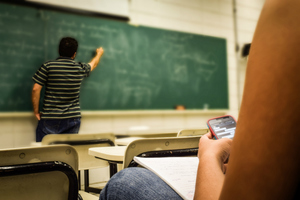Students urged to take a rapid COVID-19 test before end of half term
The UK Health Security Agency and ministers are calling on young people to make sure they take a rapid COVID-19 test before returning to school after the half term.

Coronavirus (COVID-19) cases among 10 to 19 year olds are currently the highest of any age group, with a weekly rate of 1,201 per 100,000 population.
Rapid testing is a quick, easy and reliable way to detect asymptomatic cases of COVID-19 among those that are most infectious. Identifying positive cases through rapid lateral flow tests will mean that we can ensure those with infection to not return to school where they could pass it on to others. Anyone who has symptoms should isolate and get a PCR test as quickly as possible.
It is also important that children get their COVID-19 vaccination. This is now easier than ever before as vaccinations are now available both through school or a walk-in centre.
Alongside testing and vaccination, there are other important measures children and their families can take to protect against the spread of COVID-19. Make sure to ventilate spaces by opening windows when meeting indoors, keep washing your hands regularly and thoroughly and wear face coverings in crowded enclosed spaces.
After COVID-19 vaccines, rapid testing and appropriate isolation is one of the most important ways to break chains of transmission and prevent the spread of the virus, especially as we enter the winter months.
Many families already have rapid tests at home already that could be used. They can also be collected from your local pharmacy. The government recommends that schools ask pupils and staff to test twice a week, and that families continue this during the holidays.
Taking a rapid test before going back to school will help prevent hidden COVID-19 cases from entering the classroom and ensure that children can continue to learn free from disruption.
Dr Jenny Harries, Chief Executive of the UK Health Security Agency, said:
We should commend and thank young people for taking these regular tests, which are such a vital part of our defences against COVID-19, alongside vaccination and other behaviours which help keep us all safe – such as keeping areas well ventilated and keeping a distance from each other, particularly where spaces are crowded. Many of you will have tests at home so please do use those before ordering new ones and make sure to report the results.
Today I am calling on all children to help themselves and each other by getting tested before going back to the classroom so that we can stop the infection in its tracks and keep as many children in the classroom as possible, continuing their education and developing their futures.
I want to once again thank all our teachers and those who work in schools who are working so hard to help keep children safe.
Secretary of State for Health and Social Care, Sajid Javid, said:
As students prepare to go back to school and college after half term, it is vital that they are taking free and easy rapid tests that will help detect COVID-19 infections from those who are not showing symptoms to keep the virus at bay.
Alongside testing, the vaccines are a huge defence in our armoury. We’ve already seen tens of thousands of people aged between 12 and 17 booking in for their COVID-19 vaccines over half-term at a local vaccination site to get protection ahead of winter, with more children expected to come forward for vaccines at schools next week.
Education Secretary, Nadhim Zahawi, said:
As we start the countdown to Christmas, testing regularly and getting vaccinated is the best thing we can all do to protect education and make sure we can enjoy the best of the season – whether that’s the school nativity or the family gathering over the holidays.
That’s why I want to encourage every young person in secondary school or college to take a test before you return to the classroom next week.
We have come so far in our fight against this virus, and now every single test and every single jab puts another brick in our wall of defence.